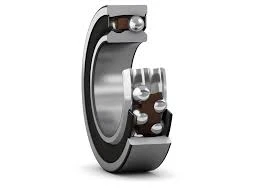
Nov . 20, 2024 13:47 Back to list
deep groove ball bearing housing
Understanding Deep Groove Ball Bearing Housing
Deep groove ball bearings are among the most widely used types of bearings in various machinery and applications. These bearings are essential in supporting both radial and axial loads, allowing for smooth and efficient operation of moving parts. However, to maximize their performance and lifespan, the selection and design of the bearing housing play a critical role.
What is a Bearing Housing?
A bearing housing, often referred to as a housing, is the structure or casing that encloses a bearing. The primary purpose of a bearing housing is to support the bearing and secure it in position within the machinery. It helps in aligning the shaft with the bearing and provides shielding against contaminants and external forces. A well-designed bearing housing not only supports the bearing but also contributes to the overall functionality and durability of the equipment.
Importance of Deep Groove Ball Bearings
Deep groove ball bearings are characterized by their deep raceway grooves that enable them to accommodate radial loads and axial loads in both directions. This versatility makes them suitable for a wide range of applications, including electric motors, gearboxes, automotive components, and industrial equipment. Their popularity stems from their ability to operate at high speeds with low friction, offering excellent performance and reliability.
Designing the Perfect Housing
When designing a housing for deep groove ball bearings, several factors need to be considered to ensure optimal performance. Here are some key aspects
1. Material Selection The material of the housing should possess adequate strength, rigidity, and resistance to wear and corrosion. Common materials include cast iron, steel, and aluminum. The choice often depends on the operating environment, load conditions, and required durability.
deep groove ball bearing housing

2. Precision Engineering The housing must be engineered with high accuracy to ensure proper alignment of the bearing and shaft. Misalignment can lead to premature bearing failure and increased operational costs. Precision machined housings can minimize vibration and noise, further enhancing the performance of the equipment.
3. Mounting and Installation The design should facilitate easy mounting and dismounting of the bearings for maintenance purposes. Common designs include pillow blocks, flanged housings, and two-bolt or four-bolt configurations. The choice of mounting style will depend on space constraints and the specific requirements of the application.
4. Sealing and Protection Protection against dust, moisture, and other contaminants is crucial for the longevity of the bearing. Seals or shields can be integrated into the housing design to provide a barrier against contaminants while retaining lubrication within the bearing.
5. Heat Dissipation Bearings generate heat during operation due to friction. The housing must be designed to dissipate heat effectively to prevent overheating which can lead to bearing damage. Incorporating ventilation or selecting materials with good thermal conductivity can enhance heat dissipation.
6. Lubrication Proper lubrication is vital for the performance of deep groove ball bearings. The housing design should allow for easy access for lubrication, whether it’s with grease or oil. Some housings come with pre-lubricated bearings, while others may feature lubrication ports for maintenance.
Conclusion
The bearing housing for deep groove ball bearings plays an integral role in the efficiency and longevity of machinery. A well-designed housing can significantly enhance the performance of the bearings by ensuring proper alignment, protection, and heat dissipation. When selecting or designing a bearing housing, it is essential to consider the specific needs of the application, including materials, mounting options, and sealing requirements. Understanding the dynamics between the bearing and its housing allows engineers and technicians to optimize equipment performance and reliability, ultimately leading to increased productivity and reduced maintenance costs.
In summary, the deep groove ball bearing housing is more than just a structural element; it is a vital component that can influence the operational efficiency and durability of an entire machinery setup. By investing in quality housing and understanding its role, users can ensure their machinery runs smoothly for years to come.
Latest news
-
Grooved Ball Bearing Design and Functionality
NewsJun.04,2025
-
Concrete Mixer Bearing Load Capacity Testing
NewsJun.04,2025
-
6004 Bearing Dimensions in Robotic Joint Designs
NewsJun.04,2025
-
Advantages of Single-Row Deep Groove Ball Bearings
NewsJun.04,2025
-
Applications of Deep Groove Ball Bearings in Automotive Systems
NewsJun.04,2025
-
Innovations in Bearing Pressing Machine Design
NewsJun.04,2025
